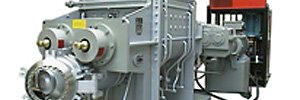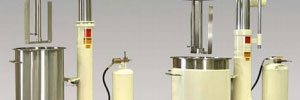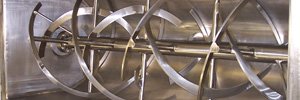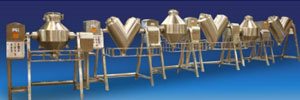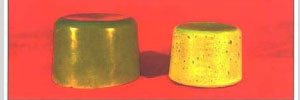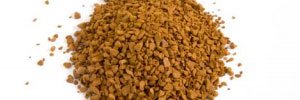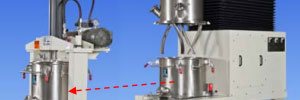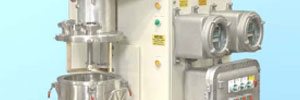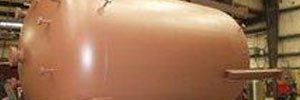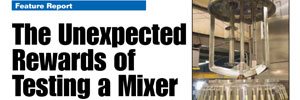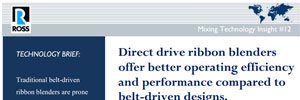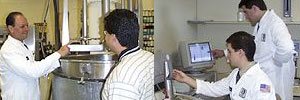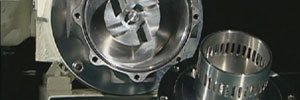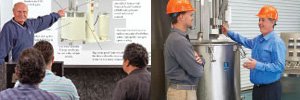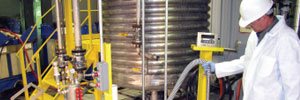Ultra-High Shear Preparation of CELLULON PX and AxCel CG-PX Microfibrous Cellulose Blend Solutions
Friday, February 8, 2019

INTRODUCTION
CELLULON PX and AxCel CG-PX microfibrous cellulose blends are unique rheology modifiers that function as suspension aids by creating a true yield stress while imparting minimal impact on the final (or "pour") viscosity of a household product. Microfibrous cellulose effectively suspends active insolubles, bleach precursors, encapsulated enzymes, air bubbles or decorative particles in various surfactant systems. These suspended particles provide functional benefits and/or visual cues to a product and imply higher intrinsic worth to the customer.
Traditionally, formulators have used various water-soluble polymers to increase product viscosity and suspend particles. However, this method has proven to be problematic in high surfactant systems where compatibility is very limited for most polymers.
Rather than relying on simply thickening the surfactant formulation, CELLULON PX and AxCel CG-PX microfibrous cellulose technology forms an insoluble, microscopic three-dimensional network in the liquid. The advantages to this suspension mechanism include its independence from surfactant level and level of micellar structure; its ability to suspend without negatively impacting pour viscosity; and its biodegradability.
This 3-D network formed by CELLULON PX or AxCel CG-PX microfibrous cellulose structures the fluid, producing a measurable yield stress (minimum force per unit area that must be applied to make the structured fluid flow). A particle is suspended in place in this network as long as it doesn't exceed the yield stress of the fluid. By adjusting the concentration of CELLULON PX or AxCel CG-PX microfibrous cellulose, the necessary yield stress is produced to suspend particles of different sizes and densities.
PROCESSING:
Obtaining the optimal functionality of CELLULON PX or AxCel CG-PX microfibrous cellulose requires proper activation techniques. The co-processing agents present in these microfibrous cellulose blends are xanthan gum and cellulose gum, both soluble components that need to be properly dispersed and hydrated in order to completely release the insoluble active ingredient, microfibrous cellulose, into the water phase.
Upon hydration of the co-agents, microfibrous cellulose is released, but remains highly associated -- almost like pellets of cellulose rather than the desired "web" or "net" of cellulose fibers. Breaking these pellets apart, i.e. the activation step, thus requires high shear mixing.
It is recommended by CP Kelco that one prepare a CELLULONPX or AxCel CG-PX microfibrous cellulose concentrate (up to 1 wt% solution) in fresh water. This concentrated material can then be added to the surfactant formulation at the desired dose using low shear, simple blending equipment.
LAB SCALE ACTIVATION TECHNIQUES
Kitchen blenders have shown great efficacy in CP Kelco's labs for making 1% CELLULON PX and AxCel CG-PX microfibrous cellulose concentrates at bench scale. The activated concentrates prepared this way (see lab notes on right) are incorporated into a desired formulation and the measurements of yield stress and rheology serve as the benchmark for comparison with other forms of processing used to activate CELLULON PX or AxCel CG-PX microfibrous cellulose. This method is useful when scaling up to high shear activation methods for pilot plant and full-production scale.
Microscopy techniques are also useful for assessing activation. As the microfibrous cellulose becomes fully activated, it loses its discrete, particle-like structure. By observing a deaerated sample through a simple microscope (12-20x magnification is adequate), one can monitor the level of dispersion. As activation nears completion, there should be few or no particles present.
PRODUCTION SCALE ACTIVATION TECHNIQUES
Various activation techniques were tested at Charles Ross & Son Company's Test & Development Center. The mixing trials evaluated the capability of Ross Ultra-High Shear Mixing devices to fully activate a 1% CELLULON PX microfibrous cellulose solution. Degree of activation was determined using both microscopy and characterization of functionality in a benchmarked surfactant system.
Each solution tested was pre-mixed using a laboratory mixer with a disperser (saw-tooth) head for approximately 2 minutes, including the time for powder addition.
For full report with results, please view the complete application bulletin.
CONCLUSIONS:
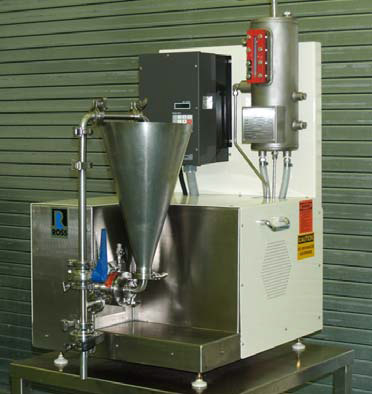
Based upon the microscope work and the empirical sample preparation data employed in these tests by CP Kelco technicians, the following are the general conclusions:
- In the X Series and QuadSlot configurations, approximately 4-5 passes were required to obtain full activation of microfibrous cellulose products.
- In the MegaShear configuration, approximately 3-4 passes were required to obtain full activation of microfibrous cellulose products.
- The HSM-400DL with the fine screen stator head reached partial activation at 12 passes but would have required further passes to potentially reach full activation.
- The HSM-400DL with the slotted stator head (results not shown in above table) was not able to provide enough shear to reach activation even after 20 passes.
The HSM-400DL model was used in this study to evaluate the performance of a conventional high shear mixer equipped with the typical four-blade rotor and stator assembly.
The results of the mixing trials illustrate that the Ross Ultra-High Shear Mixer outperforms a regular high shear mixer in terms of activation capability. In particular, the QuadSlot and MegaShear mixers offer users of CELLULON PX or AxCel CG-PX microfibrous cellulose the advantage of superior throughput rates.
ROSS ULTRA-HIGH SHEAR ROTOR/STATOR DESIGNS:
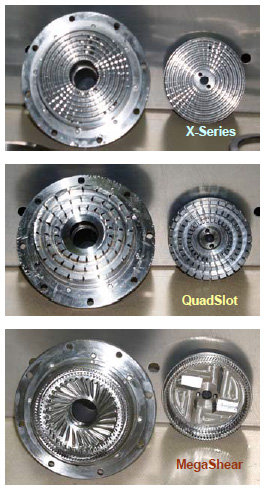
The X-Series head (detailed in US Patent No. 5,632,596) consists of many concentric rows of intermeshing teeth. The mix material begins at the center of the generator and moves outward through radial channels cut in the rotor/stator teeth. Tolerances are extremely close, and the shear applied to the material in each pass is intense. The shear applied by the X-Series head is further intensified since this generator operates at very high tip speeds of up to 18,000 fpm (standard models run up to 11,300 fpm). The gap setting is adjustable from 0.010” to 0.060” by a set of shims for fine-tuning shear levels and residence times.
The QuadSlot mixing head is a four-stage rotor/stator with a fixed clearance. It is used for applications where very high shear levels are required, but precise control of the shear is not important. The QuadSlot generator produces higher pumping rates than the X-Series head and also requires higher horsepower to run a similar diameter X-Series rotor.
In comparison, the MegaShear head (detailed in US Patent No. 6,241,472) operates at the same tip speed as the X-Series and QuadSlot heads, but is even more aggressive and shear-intensive. The generator assembly consists of parallel semi-cylindrical grooves in the rotor and stator towards which product is motivated by high velocity pumping vanes. Different streams are induced within the grooves, and the resulting flow pattern causes these streams to collide several times.



